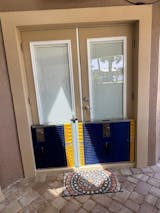Floods can be devastating, causing immense damage to homes and properties. While it's impossible to predict when a flood will occur, it is possible to prepare for the aftermath. This comprehensive guide for homeowners is designed to help you navigate the difficult process of flood recovery. From safely returning to your home, documenting damage, filing insurance claims, to initiating repairs, we've got you covered.
Safely Returning to Your Home
- Safety First: Before returning to your home after a flood, ensure that it is safe to do so. Check for structural damage, gas leaks, and electrical issues. It's crucial to prioritize your safety and the safety of your family.
- Assess the Damage: Once it's safe, conduct a thorough inspection of your home. Document the damage with photographs and notes. This documentation will be crucial for insurance claims and repair estimates.
Documenting the Damage
- Photo and Video Documentation: Take clear, comprehensive photos and videos of the damage. Focus on individual items, structural damage, and the extent of water intrusion.
- Make a Detailed List: Create a detailed inventory of damaged items, including their estimated value and age. This information will be essential for your insurance claim.
Filing Insurance Claims
- Contact Your Insurance Company: Notify your insurance company as soon as possible. Familiarize yourself with your policy's coverage and deductibles to better understand what can be claimed.
- Provide Necessary Documentation: Submit all documentation, including photos, videos, and the inventory of damaged items, to your insurance company promptly.
Initiating Repairs
- Hire Professionals: For structural damage, electrical issues, and plumbing problems, it's often best to hire qualified professionals. They can assess the extent of the damage and provide accurate estimates.
- Mold and Mildew Prevention: Mold can develop quickly after a flood. Ensure proper ventilation and consider using dehumidifiers to prevent mold and mildew growth.
- Financial Assistance: Explore federal and local disaster assistance programs, which may provide financial aid for repairs or temporary housing.
Flood Barriers for Homes
In addition to post-flood recovery steps, it's essential to consider flood prevention measures for the future. Flood barriers are an effective way to protect your home from floodwaters. These barriers can be deployed before a flood and provide an extra layer of defense. Common types of flood barriers include sandbags, flood gates, and inflatable barriers. Evaluate the flood risk in your area and consult with a professional to determine the most suitable option for your home.

Conclusion
Recovering from a flood can be a challenging process, but with the right guidance, you can navigate it effectively. Remember to prioritize safety, document the damage, file insurance claims, and initiate repairs promptly. Additionally, consider investing in flood barriers to protect your home in the future. To learn more about flood barriers and how to safeguard your home, contact Dam Easy today to get your own flood barriers kit. Taking proactive steps now can make a significant difference in reducing the impact of future floods on your property.
€779,00
DAM EASY® FLOOD GATE - DOOR DAM Floods are becoming more common around the world. What was once a 100-year phenomenon is now a seasonal trend that homeowners must deal with. That’s EXACTLY why you need this Dam Easy Flood… Read MoreFlood Barrier Door Dam - Ultimate Flood Gate





















